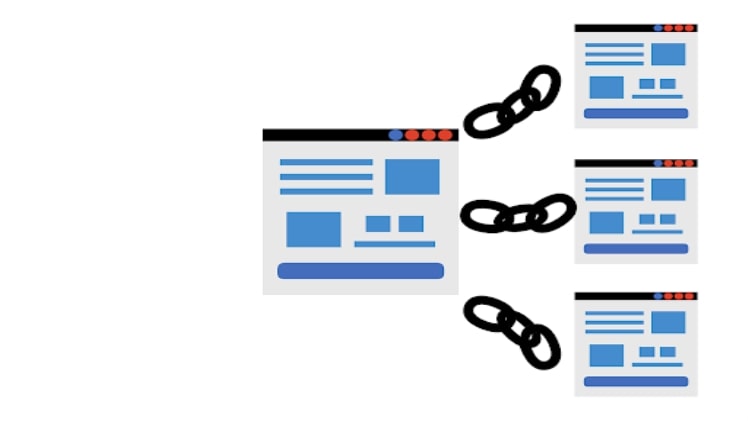In 2015, Google made a fantastic announcement – mobile-friendly websites get a boost in rankings. The core of this update centered on the responsiveness of websites, on them being able to change and adapt to users’ mobile screens.
The responsive design came long before 2015, of course, but only with this update have websites that use it been directly rewarded by Google’s algorithms. Indirectly, the benefits have always been there, becoming only more pronounced with time.
Instead of only getting direct “SEO points” that help with your rankings through Google’s algorithms, responsive design is, above all, a way to provide a better, more functional, more friendly user experience. Visit Here: gopage7
Happy users mean more conversions and traffic. Check out our article to learn more.
1. What Is Responsive Design
The responsive design hinges on a couple of core principles that lead to your specific page or site adapting to a user’s device. If you visit this site btjunkie you can find out more about guest posts, you can find out more information if you visit this site mininova
Click here the website searchusers you can find out the lots of information thumbtube
So, no matter what is found on a blog post, or no matter what your website looks like, you will provide the same level of convenience and quality to phone, tablet, and desktop users.
On the other hand, when you’re not using responsive design, you essentially need to build a template from scratch for every device. In essence, you actually get multiple pages you need to keep track of.
Now, at the core, the most common principles that allow for responsive design are:
- Media queries
- Responsive media
- Fluid grids
A custom web design company creates a superior digital experience and responsive design. So, with media queries, a responsive website gathers data on the size of a visitor’s screen. Through responsive media and fluid grids, the page changes, images shrink, elements move around, all for the purpose of providing a better, clear experience. Click Here: wmt24
The Benefits
Now let’s get into the meat of the issue – the actual advantages of responsive design. Below you can see why you should go through all the trouble of setting it all up and making it a priority for your developers.
Improved backlinks

https://pixabay.com/illustrations/web-page-links-seo-external-link-6271951/
Right off the bat, we should start with backlinks. Backlinks are one of the best ways you can boost your rankings. In essence, these are links from (hopefully reputable) sites that lead to your page.
For Google’s algorithms, they signify that your website is worth checking out, that it’s a reputable source of data and info. Attracting as many of these as possible is a must.
An unresponsive website that takes ages to load, and doesn’t even show up properly on tablets and phones, is not something people will be willing to share. You can’t really expect proper links from reputable sites if they can’t use yours on the phone.
Greater Mobile Traffic
Roughly half of all web traffic comes from mobile devices. Now imagine if your website simply doesn’t work well on peoples’ phones. It loads for ages, people can’t navigate it properly, half the elements text is missing – essentially, it’s a chore using your site.
For this very reason, Google gives better rankings to sites that are responsive (as we’ve mentioned at the beginning of our article).
Don’t believe us? Test it out for yourself.
Go to Google Analytics, and see how many phone users visit your website. Then, compare the time they spend on your sites with your desktop users. If you don’t have a responsive design, we are convinced you will see much lower time on page and much higher bounce rates from mobile users. Visit Here: eblogz
After you implement responsive design, check the numbers, and decide whether it was worth it.
Easier Website Analytics

https://pixabay.com/photos/computer-statistics-traffic-5837248/
While we’re on the topic of Google Analytics, let’s get into analyzing data. When you’re running a website, you need to keep an eye on the raw numbers: number of visitors, bounce rates, user demographics, time spent on page, etc.
Your strategies and plans need to adapt to these numbers. They can show blocks in the conversion funnel, helping you figure out what you’re doing wrong.
When you’re not using responsive design, you actually have two sets for every data point, for every page. Visitors are interacting differently with your page when they’re on mobile, and when they’re on their desktops.
Responsive design, however, adapts naturally. You only have one page that changes in accordance with the user’s needs. Instead of comparing, contrasting, and combining multiple sets of information, you have everything at once in front of you.
Check out this site vpnlab.info for recent news and Most of the people visit this site grooveshark.info for getting latest news. You can also click here webvan.info for more information. Read more about beenz.info
Directly Improve Rankings
Search engine optimization has many parts, it is composed of an array of necessary and vital improvements. Much of it is highly complex, but it always has the end-user in mind.
Let’s try an example that doesn’t relate directly to responsive design, but that does illustrate our point.
So, if you’re working on your local SEO, you want to get Google My Business set up. If you want to hire web design companies in Chicago, these companies need to properly optimize for local searches. They should have the right keywords, the right niche content relating to their city, etc.
In essence, you gave people easy access to your website with Google My Business. People can find you on Google Maps in an instant, a “Chicago optimized” blog of a web design company will show up when Chicagoans want to hire somebody local, it all boils down to the user.
With responsive design, you give the same quality of content and information to people, no matter which device they might be using, and Google rewards you for that. This can be directly seen in their post on their 2015 update.
Better For Social
If your website doesn’t have at least two social media pages, it might as well not exist. Not being able to share content and promote your website on Facebook, or Twitter, or Instagram means missing out on some very serious channels.
You want people to share your content, to promote you themselves, to recommend you to their friends. Responsive design makes this easier.
More than half of the population uses phones to browse social media. If they are unable to find the share button because your page is not optimized for mobile, they simply won’t share. Why would they go through the trouble when you didn’t bother optimizing anyway?
Responsive design means ease of use on all platforms and devices. People will be more engaged with your pages if they can actually use and see them. Don’t miss out on potentially half of your social media traffic.
Bounce Rates
Ah, dreaded, blessed bounce rates. These are wonderful systems introduced years ago. Essentially, the bounce rate measures how often people quickly leave the page they just entered. If it’s high (80% and above), it shows Google that people only enter your page but don’t find it valuable enough to stick around.
Now, without responsive design, people might leave your page immediately, even if the content within is something they would really enjoy.
Having a poor experience, not being able to use a website, it’s stressful and just downright annoying. Why would they stay on a page they can’t even read?
Easier Development and Maintenance
If you’re avoiding responsive design, you need to have multiple versions of the same page. SO, one for mobile, one for desktop, one for tablets… You probably already see a problem here – double the work!
Instead of investing the resources for building multiple versions, you let the responsive design do the work. Your developers can then invest their time and energy into other projects.
The same goes for maintenance. Instead of having your team checking, updating, and (if needed) fixing multiple pages, they only need to focus on one.
Better Conversions
We harped on and on about the user experience. That is the core of responsive website design, but at the end of the day, we all hope that leads to better conversions. Whether it’s promoting a cause, educating the masses, or simply making money from your website, conversions matter.
By improving bounce rates, getting more traffic from social media, and having a more stable and secure website, you will naturally get much better numbers.
Conclusion
If there is one thing we believe you should take away from this article, it’s this – responsive design is for the users. By focusing on your audience, by making your content as easy to access and use as possible, you make your target demographic happier.
This, in turn, leads to lower bounce rates (people spend more time on your pages), they come to your site more often, and they will interact with your pages more and more.
Author bio
Travis Dillard is a business consultant and an organizational psychologist based in Arlington, Texas. Passionate about marketing, social networks, and business in general. In his spare time, he writes a lot about new business strategies and digital marketing for DigitalStrategyOne.

